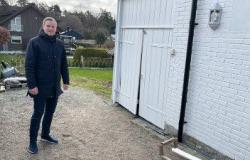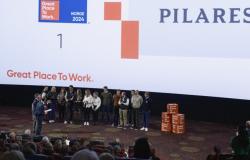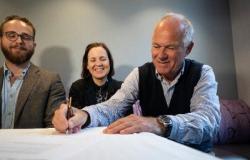And this is how the school of the future can be better.
- Herner Sæverot and Glenn-Egil Torgersen
Professors of pedagogy
Less than 20 minutes ago
This is a debate post. The entry was written by an external contributor, and quality assured by BT’s debate department. Opinions and analyzes are the writer’s own.
The undersigned has a total of 80 years of experience with the Norwegian education system, both as practicing primary school teachers and as researchers in higher education. We have experienced, both from the inside and outside, that new curricula have constantly been introduced for primary and secondary education.
Thus, as subject pedagogues, we have in-depth knowledge of pedagogical theoretical foundations, subjects and content, timetable structure and, not least, the pedagogical practice in the school, as expressed in the following curricula: Mønsterplanen 1974 (M74), Mønsterplanen 1987 (M87), Reform 1994 (R94 ), Curriculum 1997 (L97), Knowledge Promotion 2006 (LK06) and Knowledge Promotion 2020 (LK20).
One thing stands out as clear as day: Up until L97, both the plans and the educational practice bore the mark of faith and hope in the school as an independent and important democratic and values- and interaction-oriented training ground for both children, teachers and society. The school was not controlled by financial interests, politicians and thinkers. Pedagogy was at the center.
The breakup came in the 1990s, with Gudmund Hernes. After this breach, the problems in the school are in a row. Let’s take a closer look at three basic problems that underlie many of the problems we see in schools today.
Firstly After the 1990s, we got a centrally managed and bureaucratized school, where teachers, curriculum theoreticians and subject pedagogues have almost no influence on the development of school curricula.
It is a problem because politicians are then almost free to pull things over the heads of those on the “floor”, the teachers.
Secondly have we got an international and one-sided education policy where the school is linked to economic competitiveness. Words that have to do with school and teaching have been transformed into business economics concepts and understandings. While schools have become “teaching companies”, pupils have become “apprentices” and “apprenticeship candidates”.
The problem here is that the pupils’ knowledge and competence are regarded as the “raw materials” that exist to create economic growth, while educational purposes of freedom and solidarity are set aside.
Thirdly we have got a strongly theory-driven school, with a downplaying of the practical and aesthetic subjects. Not only has there been more theory in school, but the so-called theory subjects have also become even more theoretical than before.
To put this theory development a bit to the fore, it is about the students first having to read up on the hammer’s history, physics and function, before they are allowed to use the hammer.
We have previously referred to this development as the “Theory syndrome” (ref. Klassekampen in 2014), a development that may favor girls more than boys, who are constantly dropping out in the education and school sectors. The same syndrome may also be related to why few men choose to become teachers in schools.
Thus, the unitary school is strongly threatened. School is not for everyone. We have got a school that benefits some, while others drop out.
These three problems can be traced back to sociologist and Ap politician Gudmund Hernes’ introduction of reforms R94 and L97. As Minister of Church, Education and Research in the government of Gro Harlem Brundtland, Hernes entered the school field with great faith in his own ideas and ideologies.
Completely without history, Hernes made new moves at the school. He bureaucratised the school, toned down the practical-aesthetic subjects and strengthened the theoretical subjects, while he connected the school to the OECD’s education policy which regards pupils as human capital.
After Hernes’ haughty entry into the Norwegian school system, it has been free for other knowledge ministers, from the left to the right, to continue and reinforce the bureaucratisation, economisation and theorisation of Norwegian schools.
But honestly, hasn’t the school improved with the latest curriculum?
also read
Almost every day I go to work and fail children and young people
In 2020 introduced Erna Solberg’s bourgeois government a renewed version of the Knowledge Lift, the so-called Fagfornyelsen (LK20). In this curriculum, pedagogical concepts such as learning and education were given a boost, specifically in the overall section. On the surface this looks fine, but the deception is hidden.
Because at the same time that LK20 aims to learn and train students, there is an economic ulterior motive lurking. Concepts such as learning and education have been stripped of their original pedagogical meaning. The real purpose is for the economy to grow. Learning and training really means squeezing as much competence as possible out of the students, because here there is income to be had.
Hernes deprived the Norwegian school of its identity and it has been led onto a track where the problems pile up: Boys drop out, violence escalates, psychological problems increase, and so on.
A track change is required to bring the school out of the trouble it has found itself in. At the same time, we must learn from the Norwegian school model, as it appeared before the 1990s, in order to regain faith and hope in the unitary school as an independent formative place for both children, teachers and society – without bureaucratisation, economisation and one-sided theorising. Only in this way can the school of the future be better.
Published: March 24, 2024 7:57 p.m







